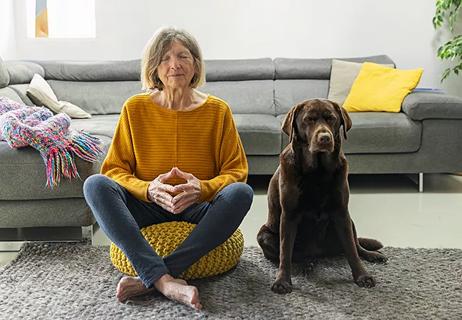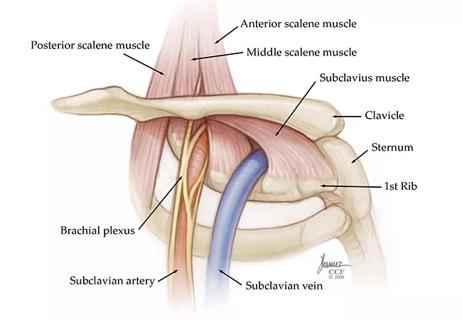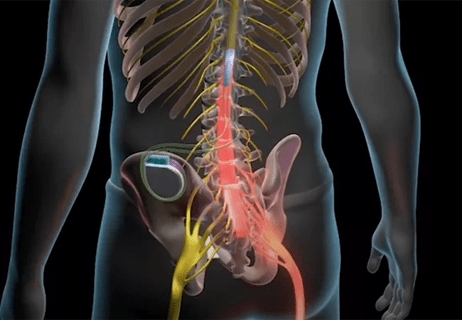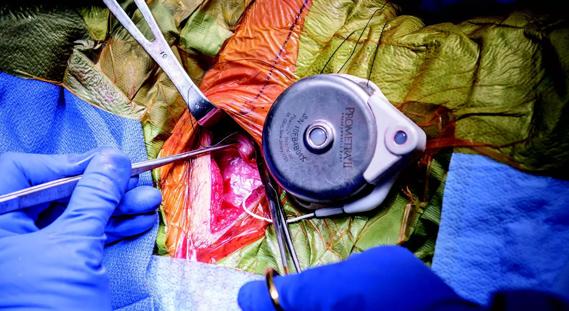New neuromodulation therapy prevents over stimulation

Since the first medical neuromodulation procedure was performed in 1967 in Australia by Dr. Norman Sheely, pain specialists, researchers and industry have been working to improve and perfect this treatment modality.
Advertisement
Cleveland Clinic is a non-profit academic medical center. Advertising on our site helps support our mission. We do not endorse non-Cleveland Clinic products or services. Policy
Today, more than half a century later and dozens of iterations in technology, closed-loop stimulation is a breakthrough that has great potential for helping patients manage their pain. Nagy Mekhail, MD, PhD, Director of Evidence-based Pain Management Research at the Cleveland Clinic’s Department of Pain Management, has practiced many therapies over the years and is excited by the promise of closed-loop spinal cord stimulation (SCS).
“Neuromodulation has been used for many pain conditions, but it has had its limitations,” Dr. Mekhail says. “Patient feedback from the preliminary study done in Australia, is telling us that the most recent advances in the technology provide great hope for patients with chronic pain conditions, compared with previous neuromodulation technologies we have used.”
The evolution of neurostimulation over the past 50 years has gone through many phases. Starting with unipolar stimulation of nerves, pain specialists moved to spinal cord stimulation with multiple leads using the following fixed-input technologies:
Most recently, spinal cord stimulation has been used to provide pain reduction and improve functional capacity and quality of life for patients with complex regional pain syndromes, failed back surgery syndrome and other neuropathic pain syndromes. The most recent randomized control trials throughout the 2000s have shown that these therapies have failed to achieve long-term results. Dr. Mekhail notes that more vigorous study designs have been needed to establish evidence‐based applications of neuromodulation therapy in emerging indications of pain management.
Advertisement
Studies looking more closely at the effectiveness of these technologies and methods have shown a 50-50 response from patients at best, and even when patients reported some therapeutic pain relief, it was very limited. “There has been no way of knowing the real dose of the stimulation. With all the new advancements in technology, we assumed we knew better, and sometimes we were correct and other times the new technologies did not work as well,” says Dr. Mekhail.
He says that fixed-input spinal cord stimulation systems may drive patients to utilize sub-therapeutic electrical doses due to overstimulation events. “When we ask patients how they feel, they would say they felt a sensation, yes, but not necessarily pain relief,” Dr. Mekhail says. “And the studies showed that it diminishes by 70 percent over time and there is no relief.”
“In hindsight, we missed with these technologies,” says Dr. Mekhail. “We accepted the uncertainty and patients didn’t get the relief we expected.” In fact, in 2017, the global market showed about 100,000 spinal cord stimulators implanted annually, with about 25 percent of them having unsatisfactory outcomes over time, which frustrates patients and costs millions of dollars.
Closed-loop feedback technology was introduced in 2013. The idea came from electrophysiologic studies on the spinal cord neurons, which record the evoked compound action potential (ECAP), representing the synchronous firing of a population of electrically stimulated nerve fibers. This technology allows the SCS device to communicate with the spinal cord neurons and adjust the dose of stimulation accordingly.
Advertisement
Dr. Mekhail explains that it delivers and maintains a therapeutic electrical dose while preventing over stimulation of the dorsal column. Today, when patients have crossed over to closed-loop control, they utilize the appropriate stimulation dose for the neurons and pain relief was maintained at a therapeutic level 90 percent of the time.
“This is a unique way of dealing with the nervous system. The device is listening to the neurons of the spinal cord. It is interacting with the living nerve structure and this makes it much more effective,” Dr. Mekhail explains. “With closed-loop stimulation, we are seeing a 93 percent improvement in chronic pain – this is marvelous. The beauty of this is that there is always contact between the stimulator and the nerves.”
Today, closed-loop spinal cord stimulation has proven efficacy in neuropathic pain. Dr. Mekhail is performing SCS for neuropathic pain and says his patients are getting measurable pain relief, they are sleeping better and taking less medication.
Dr. Mekhail is the Director of Evidence-based Pain Management Research at the Cleveland Clinic’s Department of Pain Management.
Advertisement
Advertisement

Researchers seek solutions to siloed care, missed diagnoses and limited access to trauma-informed therapies

Study participants also reported better sleep quality and reduced use of pain medications

Two-hour training helps patients expand skills that return a sense of control

Program enhances cooperation between traditional and non-pharmacologic care

National Institutes of Health grant supports Cleveland Clinic study of first mechanism-guided therapy for CRPS

Pain specialists can play a role in identifying surgical candidates

Individual needs should be matched to technological features

New technologies and tools offer hope for fuller understanding